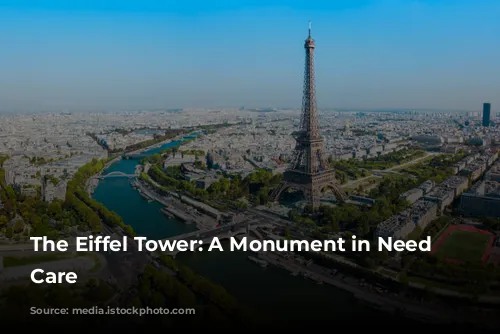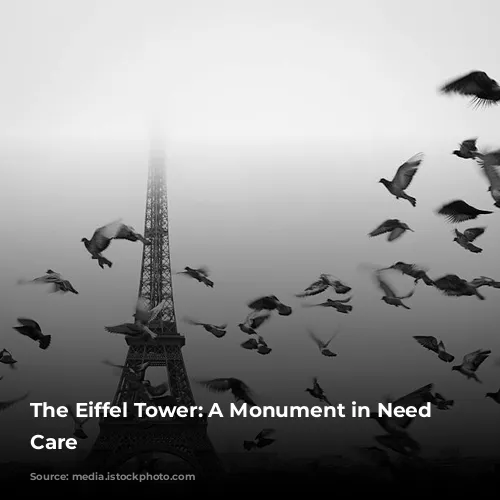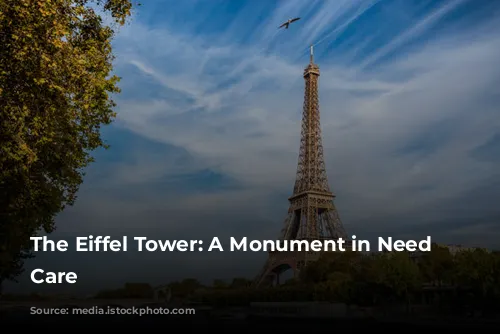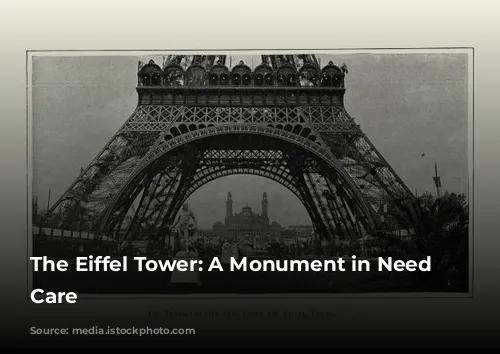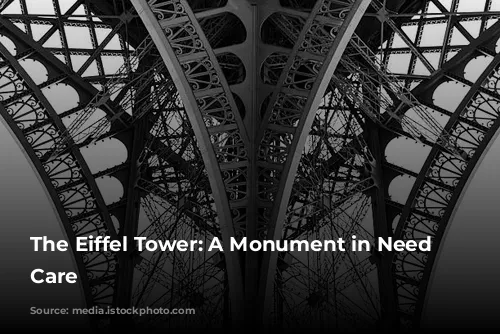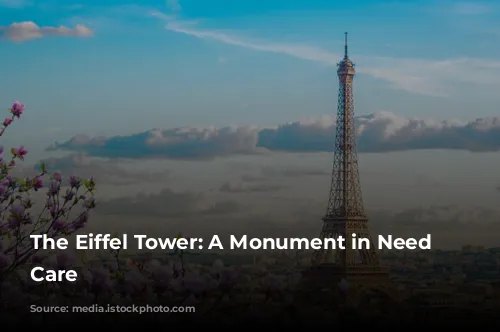The iconic Eiffel Tower, a symbol of Paris and a global landmark, requires ongoing attention. While it attracts millions of visitors each year, concerns have emerged about the tower’s condition, raising questions about the adequacy of its maintenance.
A 2022 article in Marianne, citing confidential reports, expressed worry about the tower’s deteriorating state and questioned the sufficiency of planned maintenance. The Guardian reported that the tower, despite needing “full repair,” was receiving only a “cosmetic makeover” in preparation for the 2024 Paris Olympics.
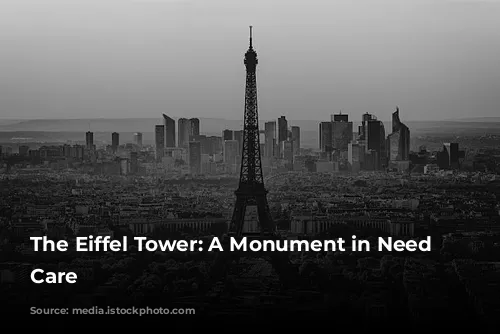
A Brief History of the Iron Lady
The Eiffel Tower, originally known as the “300-meter Tower,” was built in just two years, two months, and five days, opening to the public on May 15, 1889, at the Exposition Universelle, or Paris World’s Fair. This event commemorated the centennial of the French Revolution, making the tower 100 years younger than the momentous event.
Despite initial resistance from prominent figures like Charles Garnier and Guy de Maupassant, the tower was an immediate success, welcoming over 2 million visitors in its first year. Today, it draws around 7 million visitors annually, solidifying its position as the world’s most visited paid monument.
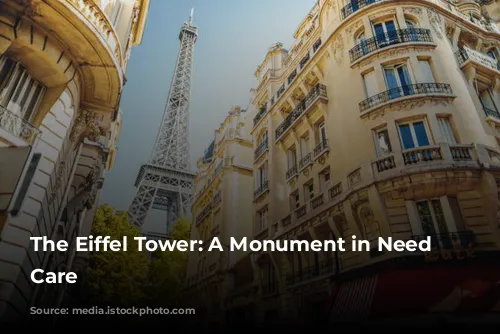
A Tower of Strength and Beauty
The Eiffel Tower, standing tall at 984 feet (300 meters) with a base measuring 410 feet (125 meters) in width, is an imposing structure. Its metal frame weighs a hefty 7,300 tons (6,622 metric tons).
Professor Benjamin Schafer, a civil and systems engineering expert, describes the tower’s shape as “perfect for resisting wind load.” Though initially intended to stand for only 20 years, the tower’s usefulness for radio and telecommunications transmissions, coupled with its global appeal, ensured its longevity.
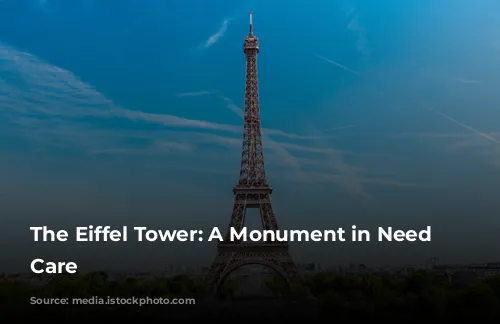
A Continuous Battle Against the Elements
Since its construction 132 years ago, the Eiffel Tower has been painted seven different colors, reflecting its constant struggle against the elements that gradually erode its iron frame.
The tower’s original Venetian red paint has been replaced several times, with shades including reddish-brown, ochre brown, yellow-brown, and brownish-red. In 1899, the tower sported a five-hue golden gradient, fading from yellow-orange at the base to light yellow at the top.
Since 1968, the tower has donned its current “Eiffel Tower brown” in three shades, with the darkest at the bottom. This color, while seemingly understated, was “chosen for its harmony with the Parisian cityscape.” However, in preparation for the 2024 Paris Olympic Games, the tower will once again showcase a golden hue.

A Legacy of Engineering Brilliance
The Eiffel Tower’s design, conceived by engineers Émile Nouguier and Maurice Koechlin, working with architect Stephen Sauvestre, was selected from an open competition for the Paris World’s Fair.
Roumen V. Mladjov, writing in Structure magazine, called the tower “the materialized symbol of progress during the Industrial Revolution of the 19th century.”
While built during the era of iron, the tower’s construction predated the widespread use of steel, the primary material for modern skyscrapers.
Professor Schafer explains that “It was built out of the only material that could have built that form at that time.”
The Eiffel Tower’s enduring strength, despite its reliance on iron, can be attributed to Gustave Eiffel’s expertise in metal structures and his understanding of corrosion prevention. Eiffel, having built iron bridges for nearly three decades before constructing the tower, had a deep understanding of metal structures and their longevity.
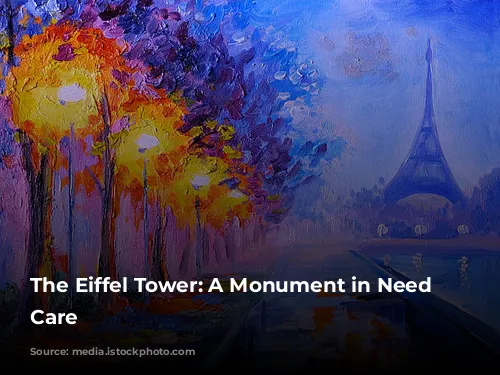
A Tower of Challenges and Triumph
Maintaining the Eiffel Tower is a continuous battle against the elements. The tower receives a complete paint job every seven years, a frequency recommended by Gustave Eiffel himself. This process involves stripping, cleaning, applying rust-proofing, and then repainting the tower.
The 2024 Olympics prompted a planned renovation, which initially involved stripping and repainting a third of the tower. However, due to COVID-19 delays and the discovery of high levels of lead in the old paint, the scope of the renovation was reduced to treating only 5 percent of the tower.
The Société d’Exploitation de la Tour Eiffel (SETE), the organization responsible for operating and maintaining the tower, is hesitant to close the tower for renovations, fearing a loss of revenue. Reports from 2010 to 2016 highlighted concerns about the tower’s maintenance and condition, with one report from 2014 finding cracks, rust, and poor paint adhesion.
Painting campaigns, which can take from 18 months to three years, involve about 50 painters and use 60 tons (54 metric tons) of paint.

A Balancing Act: Preserving History and Tourist Experience
The Eiffel Tower’s maintenance presents a delicate balance between preserving this historic landmark and catering to the demands of tourism. SETE has established a watchdog body to monitor visitor satisfaction, with 96 percent of respondents in 2019 recommending the monument to friends and family.
Professor Schafer highlights the importance of ongoing maintenance, stating, “It’s a continual process to keep things up. The Eiffel Tower is worth maintaining because we love it.”
While amateurs can freely photograph the Eiffel Tower, professional nighttime photography requires authorization from SETE due to copyright protection of the tower’s iconic sparkling lights.
The Eiffel Tower, a testament to human ingenuity and architectural prowess, stands as a symbol of Paris and a beloved landmark for generations. While its maintenance presents challenges, ongoing efforts ensure that this iconic structure continues to grace the Parisian skyline for years to come.
